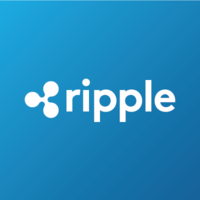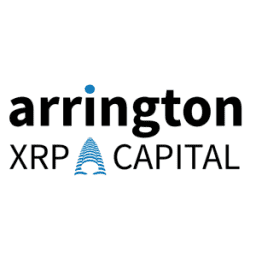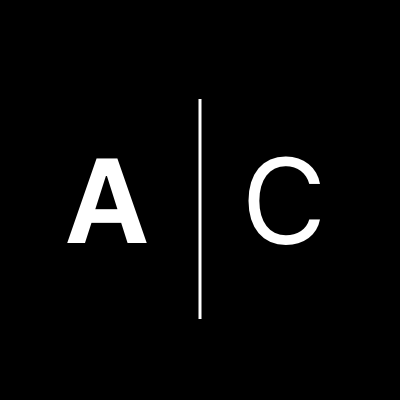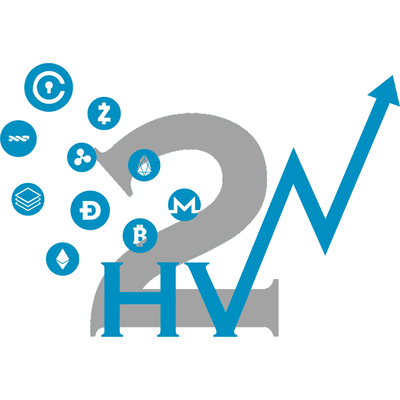
Global money transfer
XRP price live chart

Download Ripple wallet app
Store & Transfer XRP safely
Monitor your XRP balance in USD
Receive XRP in XRP network
Send Ripple by mobile phone number with 0% fee
XRP wallet mobile app for iOS and Android
Ripple basics
XRP
Payments
XRP is a cryptocurrency aiming to increase the speed and reduce the cost of transferring money between financial institutions. Underpinning Ripple's xRapid product, an on-demand liquidity solution, XRP is used as a bridge currency for financial institutions exchanging value between multiple fiat currencies. XRP is the native token of the XRP Ledger, an open-source cryptographic ledger powered by a peer-to-peer network of nodes.
Ripple token type
XRP
Native
Payments
XRP is used as a native currency within the XRP Ledger. XRP can be used for peer-to-peer payments within the XRP network. With its fast block times, XRP aims to offer high throughput and quick transactions offering 1500 transactions per second capacity and 4 second settlement times. XRP's primary use is as a bridge currency for financial institutions exchanging value between multiple fiat currencies using Ripple's xRapid, an on-demand liquidity solution.
Ripple history and first price
Centralized Distribution
100 billion XRP were pre-mined in January 2013 and allocated as follows:
- 20% was retained by the founders of XRP. Chris Larsen and Jed McCaleb each received 9.5 billion XRP. Arthur Britto received 1 billion XRP.
- 77.8% was allocated to Ripple
- 0.2% was airdropped as an experiment to try and expand usage as part of the launch.
In 2014, Chris Larsen committed 7 billion XRP from his allocation to a charitable foundation. Jed McCaleb donated 2 billion of his allocation to a donor-advised fund. In 2014 McCaleb negotiated an exit agreement from the project dictating his remaining allocation would be held in a custodial account and released to him on a monthly schedule. A daily cap on the amount he can sell of the tokens released is included in the agreement. Today, Ripple’s selling restrictions on co-founder Jed McCaleb allow him to sell his allocation at a theoretical maximum rate of 1% of daily trading volume.
Founded in 2012 by Chris Larsen and Jed McCaleb, Ripple (Formerly known as Opencoin) is a technology company that develops the Ripple payment protocol. Ripple enables banks, payment providers, digital asset exchanges, and corporations to send money globally using blockchain technology. Leveraging the prior work of Ryan Fugger, in 2012 Ripple created the XRP Ledger (formerly known as Ripple Consensus Ledger), an open-source cryptographic ledger powered by a peer-to-peer network of nodes. XRP is the native asset of the XRP ledger.
In 2004, Ryan Fugger founded RipplePay, a financial technology company aiming to create a peer-to-peer payments network. Separately, in 2011, a team of Jed McCaleb began the development of a new consensus network for digital currencies that would ultimately become the XRP Ledger. Later Chris Larsen, David Schwartz, and Arthur Britto, would join the project, and in 2012 McCaleb and Larsen approached Ryan about RipplePay. After discussion with the RipplePay community Ryan handed over the project to McCaleb and Larsen, and in September 2012 they founded Opencoin (re-branded to Ripple Labs in 2013).
In 2013 Ripple released XRP, a native token on the Ripple Consensus Ledger. At launch, it created 100 billion XRP tokens of which 80 billion tokens were allocated to the company and 20 billion were given to the three founders. Over the course of 2013, Ripple would raise over $7.5 million from some of the most prestigious venture firms in the united states. Later that year Jed McCaleb would leave the company over internal disputes around the company's vision and would ultimately go on to found Stellar.
After the initial release of the XRP Ledger, Ripple focused its efforts on getting financial institutions to use the ledger to process remittances. Entering the cross border payments market led to regulatory scrutiny, with FinCEN fining Ripple Inc for violating the bank secrecy act in 2015. As part of the remedial plan related to the fine, Ripple Inc agreed to enhance the anti-money laundering capabilities of the XRP protocol and stricter permissioning requirements were added for additional participants to join the network.
To further enhance the credibility of XRP as a partner for traditional financial institutions, Ripple obtained a BitLicense from the State of New York in 2016. The upside of these enhancements and engagement with regulators was it gave XRP the capability to more deeply integrate with the traditional financial system.
Today XRP's primary use is as a bridge currency underpinning Ripple's xRapid product, an on-demand liquidity solution. xRapid allows financial institutions to exchange value between fiat currencies through a network a digital asset exchanges that use XRP as a bridge currency for its liquidity.
To date Ripple has raised over $120 million in venture funding, and XRP is one of the largest cryptocurrencies in the world by market capitalization. Ripple and its founding team own the substantial majority of the XRP supply of which Ripple the company programmatically sells on a quarterly basis. Since 2016 Ripple has sold over $1.1 billion worth of XRP and XRP sales remain Ripple's dominant source of revenue (and controversy).
Introduced several features and enhancements that improve the reliability, scalability, and security of the XRP Ledger. Highlights of this release include: The DepositAuth amendment, which lets an account strictly reject any incoming money from transactions sent by other accounts. The Checks amendment, which allows users to create deferred payments that can be canceled or cashed by their intended recipients. History Sharding, which allows rippled servers to distribute historical ledger data if they agree to dedicate storage for segments of ledger history. New Preferred Ledger by Branch semantics which improves the logic that allows a server to decide which ledger it should base future ledgers on when there are multiple candidates.
Included incremental improvements to several previously released features.
Included the DepositPreAuth amendment, which combined with the previously released DepositAuth amendment, allows users to pre-authorize incoming transactions to accounts, by whitelisting sender addresses. The 1.1.0 release also includes incremental improvements to several previously released features (fix1515 amendment), deprecates support for the sign and sign_for commands from the rippled API, and improves invariant checking for enhanced security.
Introduced a fix for an issue that could have prevented cluster peers from successfully bypassing connection limits when connecting to other servers on the same cluster. Additionally, it improves the logic used to determine what the preferred ledger is during suboptimal network conditions.
Introduced the MultisignReserve Amendment, which reduces the reserve requirement associated with signer lists. This release also includes incremental improvements to the code that handles offers. Furthermore, rippled now also has the ability to automatically detect transaction censorship attempts and issue warnings of increasing severity for transactions that should have been included in a closed ledger after several rounds of consensus.
Introduced several fixes including a change in the information reported via the enhanced crawl functionality introduced in the 1.2.0 release, a fix for a potential race condition when processing a status change message for a peer, and for a technical flaw that could cause a server to not properly detect that it had lost all its peers. The release also adds the delivered_amount field to more responses to simplify the handling of payment or check cashing transactions.
Corrected a technical flaw in the fee escalation engine which could cause some fee metrics to be calculated incorrectly. In some circumstances, this can potentially cause the server to crash.
Corrected a technical flaw which in some circumstances can cause a null pointer dereference that can crash the server.
Improved the way that shard crawl requests are routed and the robustness of configured validator list retrieval by imposing a 20-second timeout.
Introduced several new features and overall improvements to the codebase, including the fixMasterKeyAsRegularKey amendment, code to adjust the timing of the consensus process, and support for decentralized validator domain verification. The release also includes miscellaneous improvements including in the transaction censorship detection code, transaction validation code, manifest parsing code, config file parsing code, log file rotation code, and in the build, continuous integration, testing, and package building pipelines.
Ripple technology explained
XRP's foundation is a shared public ledger used by network participants to exchange value globally. A supermajority of validators is required for the network to arrive at consensus to validate transactions initiated across the network.
Ripple Inc, has focused on integrating user verification protocols so network participants are able to define which users they trust and how much they trust them. This has the effect of causing transactions to “ripple” across the network. Because if two users without a direct relationship initiate a transaction across the network. It ripples outward finding a path linking the users together from their trusted relationships to complete the transaction.
For users just getting started, Ripple Inc. maintains a unique node list users can select by default representing validators with a history of reliably operating on the XRP network.
Cross-currency transactions typically take 3 – 5 seconds to process across the ledger. Once initiated, XRP’s pathfinding algorithm identifies the quickest least expensive way to complete the transaction. Generally, for the pathfinding algorithm to work optimally, a large number of market makers need to be operating on the network so sufficient liquidity is available to efficiently complete transactions.
To encourage the development of a robust ecosystem around the ledger, XRP maintains a variety of APIs to help nodes and other third parties interact with it based on the REST API standard. Invoicing and wallet solutions allow businesses to incorporate it as a payment option for their customers.



Ripple supply limit
Deflationary
Programmatic burn
Yes
XRP outstanding supplied is designed to be deflationary. XRP is burned to pay fees for transactions via Ripplenet. Nevertheless, XRP liquid and circulating supply are massively inflationary.
In December 2017, Ripple placed 55 billion XRP into escrow in order to alleviate concerns that a massive amount of XRP could hit the market all at once with substantial negative price impact. 1 billion is being released monthly to support Ripple’s ongoing operation of Ripplenet. Any unused funds are returned to escrow at the end of the month. On average Ripple re-escrows 700 million and 300 million XRP become liquid each month.
Ripple generated revenue from ongoing XRP sales, which account for well over 90% of the company's revenue. There are two types of XRP sales that the company discloses:
- Programmatic sales__:__ These come from the company’s XRP reserve, and can be sold at a rate of no more than 0.25% of average daily volume on defined exchanges.
- Direct sales from XRP II: These come from direct bespoke deals with institutional clients, and include (per Ripple’s 2016-2017 disclosures) reselling restrictions to ensure its partners do not purchase XRP at a discount from the company and then immediately flood the market with sales.
Ripple has sold over 1.2 billion USD worth of XRP through Direct Sales and Programmatic Sales.
Our liquid supply curve takes into account the Ripple Escrow mechanism as well as the Founder' selling agreement to calculate liquid supply. As such, even though XRP's outstanding supply is deflationary over time through fee-burning, circulating and liquid supply are massively inflationary due to escrow release, founder's distributions, and Ripple sales. At the current burn rate, it would take 20 years for the XRP Ledger to burn what is distributed by Ripple and its founders every day.
To date, Messari released to in-depth research on Ripple supply management:
- XRP Market Cap may be $6.1 billion overstated
- Circulating Supply Study for XRP














Ripple consensus
Other
Ripple Consensus Algorithm
0.07 min
The XRP Ledger is managed by an independent network of validators that constantly compare their transaction records. Any server can join to become a Ripple validator and define their own list of trusted nodes; however, in order to ensure a high degree of overlap for the network to reliably reach consensus, Ripple publishes a list of recommended validators called the "Unique Node List" (UNL) that validators consider when building consensus.
Consensus is built through a multi-round process where UNL validators share ledger candidates between each other, adding and subtracting transactions until their candidate proposals match what their trusted validators proposed. This process occurs until a supermajority (80%) of UNL nodes have matching ledgers. Once a supermajority is reached, each server independently computes a new ledger hash from the agreed-upon set of transactions and compares results. Once a supermajority (80%) of validators agree upon the hash of the new ledger candidate, the ledger candidate is considered final.
Ripple governance
Although the XRP Ledger is open source and individuals can submit pull request, a full-time development team at Ripple performs the majority of protocol development and determines the roadmap. Ripple acts as a steward of the Ripple network and an advocate for its interests and builds constructive relationships with governments and financial institutions worldwide.
While each server defines its own trusted validators, in order to ensure a high degree of overlap for the network to reliably reach consensus, Ripple publishes a list of recommended validators called the "Unique Node List" (UNL). Only the votes of the other members of the UNL are considered when determining consensus, giving Ripple the ability to significantly influence who gets to participate in consensus and who does not. Furthermore, Ripple also participates at the network level of the XRP Ledger, validating transactions.
Who regulate Ripple in 2025?
In 2015 FinCEN fined Ripple Labs Inc. for violating the Bank Secrecy Act by selling XRP without obtaining the required authorization. Ripple paid $700,000 in Penalty and Remedial Actions. In 2019, Ripple became the target of a class-action lawsuit with plaintiffs alleging Ripple, its affiliated entities and its individuals violated both state and federal securities laws in selling XRP to the public.
In 2019, The Securities Framework Asset Ratings of the Crypto Rating Council (CRC) attributed the score of 4 out of 5 to XRP and provided the below summary:
- Usage of securities-like language
- Sale of tokens or token interests prior to the existence of token utility
- Marketing of the token suggesting an opportunity to earn profits
- Decentralized development and usage
The CRC* is a member-owned and operated organization whose purpose is to assess if a crypto asset, or its development, issuance, and use have characteristics that make it more or less likely to implicate federal securities laws. According to the CRC framework, a score of 5 results when an asset appears to have many characteristics that are consistent with the Howey-test factors. A score of 1 results when an asset appears to have few characteristics that are consistent with the Howey-test factors.*
Store Ripple with Cropty cryptocurrency wallet by 3 simple steps:
- Download the app from the Apple AppStore or Google Play, or open your browser wallet.
- Create your Cropty wallet account with Face ID or Touch ID security options.
- Transfer XRP from external wallet.
Receive Ripple to your Cropty wallet by QR-code, phone number, e-mail and nickname:
- Download the app from the Apple AppStore or Google Play, or open your browser wallet.
- Create your Cropty wallet account, set up a nickname.
- Click ‘Receive’ and follow the instructions.
You can transfer your Ripple holdings and store it safely with Cropty wallet. Cropty secures safety of your holdings through various verification options like using password, authenticator app, Face ID, Touch ID and backup codes. You can be sure no one can get access to you Ripple holding except you.
Start investing in Ripple with Cropty cryptocurrency wallet by 3 simple steps:
- Download the app from the Apple AppStore or Google Play, or open your browser wallet.
- Create your Cropty wallet account, set your authentication settings.
- Transfer XRP from external wallet.
The Cropty wallet provides the most convenient application for storing and transfering Ripple. Cropty targets to become one the best crypto wallets for Android and iOS in 2025. Cropty provides convenient application and secure custodial services, built for crypto beginners, as well as for crypto-savvies.
You can receive Ripple donations instantly with Cropty wallet. Download Android or iOS app or open the web version, sign up, click ‘Receive’ and follow simple instructions. Share your address with someone who wants to donate you in crypto.
You can receive Ripple donations instantly with Cropty wallet. Download Android or iOS app or open the web version, sign up, click ‘Receive’ and follow simple instructions. Share your address with someone who wants to donate you in crypto.
You can send Ripple instantly without fee in the Cropty wallet. Download Android or iOS app or open the web version, sign up, click ‘Send’, choose ‘Send via e-mail, phone number or nickname’ and follow simple instructions.
- Sign up to Ripple wallet.
- Top up your balance with Ripple.
- Store, trade or deposit your Ripple.
- Get Ripple deposit interest directly to your Cropty wallet.









